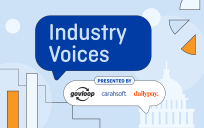We know this. We know the speed, quality, and early experience of our hires is directly proportional to the quality and depth of our internal team relationships. We know the most important relationship is between the hiring manager and the HR staffing specialist. We know we are dependent on other team members, from budget managers to program leaders to HR recruiters and HR operations experts to suitability professionals. We know each must take up and play their team roles for hiring to work.

We also know hiring too frequently breaks down — the process halts or slows (three months plus and counting) due to challenges beyond our control, or it brings suboptimal applicants to choose from, or the assessments do not yield the candidates we need, or contingent hires drop out, or worse, funding is cancelled and the job offers are rescinded. We know that hiring manager/HR professional relationship can help solve some of these challenges or make them worse.
So, what gets in the way and what do we do about it?
1. Diffusion of Accountability and Authority — Frequently, ownership of and accountability for the hiring process switches back and forth between the hiring manager, the HR staffing specialist, and others on the team. This leads to delays as team members are unsure of who is responsible for what happens next, who owns key decisions at each hiring stage, and ambiguity about how to take action to move the process forward.
What to do: Run the hiring process like a project (either the HR staffing specialist or the hiring manager can do this) — organize a kickoff meeting for hiring actions with all team members from recruiting to suitability/clearance to discuss how decisions will be made and anticipate the challenges that will arise. Set a schedule with clear timelines, actions and responsibility, and conduct check-ins to resolve workload, process, and resource challenges.
2. Different Operating Models/Different Incentives — HR professionals are deeply proficient at the hiring process and the tools they use to support it. Hiring managers are deeply proficient at running their programs and the tools they use to get their work done. Neither are proficient at the work of the other. Their two systems intersect only around hiring (or other talent management areas). Both get impatient that the other does not get what they are trying to do. Both get frustrated at inaction, wasted action, and errors on the other side.
What to do: Each needs to be reminded (patiently) how the other one works. Educate or re-educate each other on each other’s goals and languages.
Hiring manager: Express what you need in the talent, skills, and abilities of the new hire. Make the effort to understand how hiring works and how you can best play your role.
HR staffing specialist: Guide the hiring manager through the options they have in filling the position and in the parts of the process that tend to be opaque for them, especially classification, assessment, and selection. Use the recruiting and talent acquisition tools to collaborate and build trust.
3. Urgency of the Now — Too often, by the time you get approval to hire, you feel you are already running far behind when you needed that staff member to be onboarded productively contributing. Budget delays, impossible timelines in legislation, and other factors delay establishing the validated need that kicks off most federal hiring processes. This leads to doing the expedient: selecting an occupational series or grade level that may not be ideal, grabbing the latest position description and JOA off the shelf, shortening the time applicants have to respond, agreeing to a less deliberate assessment process. While understandable, this short-termism can lead to a certified candidate list that causes the hiring manager to refuse and start the process over again.
What to do: Triage. Discuss short-term options to fill your capacity gaps while working to get what you really need — detailees, temporary hires, IPAs, a contractor. You can also piggyback on other hiring managers filling the same position through pooled hiring and shared certs inside or outside your agency (USAJOBS has a new app for doing that). When you can, work to pre-position the recruitment, job analysis, position descriptions, assessment strategy, job opportunity announcements, and other parts of the process early, so that they are ready to go as soon as you have the validated need approved.
We don’t control the externalities that can make or break hiring — changing budgets, timelines and workload, priority shifts — but we can influence the quality of our talent acquisition relationships, whether we are a hiring manager or an HR professional. We can look out for each other. We can cover for each other and fill a gap when we see it, even if it is not strictly our responsibility.
Each of these challenges and actions takes time. Look at your calendar now. When are you going to reach out to your HR professional or hiring manager partner to talk about what’s next in talent acquisition?
Peter Bonner is a public, non-profit, and private sector innovator, working at the crossroads between these sectors in the areas of human capital, workforce development, leadership effectiveness, and operational excellence. He is a senior fellow at the Federation of American Scientists. More here.





Leave a Reply
You must be logged in to post a comment.